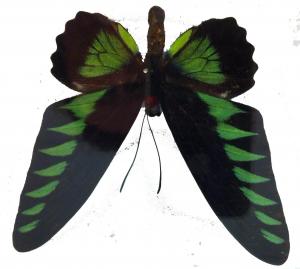The Fall Faculty Lecture Series presents: Dead Bugs & Dehydrated Plants
Tales from the consortium's coffers
University of Hawaiʻi at MānoaContact:
Posted: Sep 21, 2011
In association with the Hamilton Library Bridge Gallery exhibit, Curator's Choice: Selections from the UH Museum Consortium, the second lectures in the Fall 2011 Faculty Lecture Series will be held on Thursday, September 29, in UH Mānoa’s Hamilton Library, Room 301, from 3:30 - 4:30 p.m. Admission is free and refreshments will be provided. The doors open at 3:15 p.m.
The UH Insect Museum, Hawaiian Agriculture and Conservation of Biodiversity. Dead men may tell no tales, but dead bugs do! by Daniel Rubinoff, PhD, UHM Professor of Plant and Environmental Protection Sciences.
The UH Insect Museum plays a vital role in defending agriculture and preserving spectacular native biodiversity. Hawai‘i faces constant threats from new invasive species, and the decline of our unique insects continues. Insect museums are crucial for understanding and preventing both of these processes—research on fruit flies, diving moths and vampire bugs highlight the museum connection.
Rubinoff started collecting insects as a kid and never stopped. He hopes to see a day when more people will say ‘cool’ instead of ‘eww’ when they see a rare Hawaiian insect.
Digitizing Plant Biodiversity: The Consortium of Pacific Herbaria by Tom A. Ranker, PhD, UHM Professor and Chair of Botany.
This presentation will highlight the development of a new collaborative regional effort between herbaria in the Polynesia-Micronesia hotspot region (Hawaiʻi, American Samoa, Samoa, Tonga, Palau, Guam, and Fiji). These herbaria are curating and digitally imaging nearly one million dried plant specimens, creating a standardized plant checklist, and making botanical collection data and images available online from a single web portal.
Ranker’s research interests include the origin and evolution of the flora of the Hawaiian Islands and of other island floras in the Pacific region. He is involved in phylogenetic systematics and evolution of vascular plants, especially lycophytes and ferns; evolutionary and ecological genetics of plant populations; conservation biology; and historical biogeography.
The Faculty Lecture Series is presented by the Vice Chancellor for Research and Graduate Education, the Office of Research Relations, and the University of Hawaiʻi at Mānoa Library.

